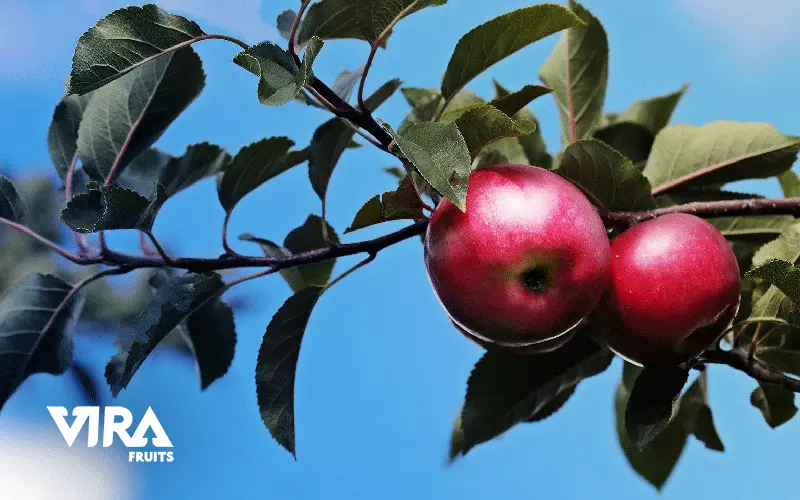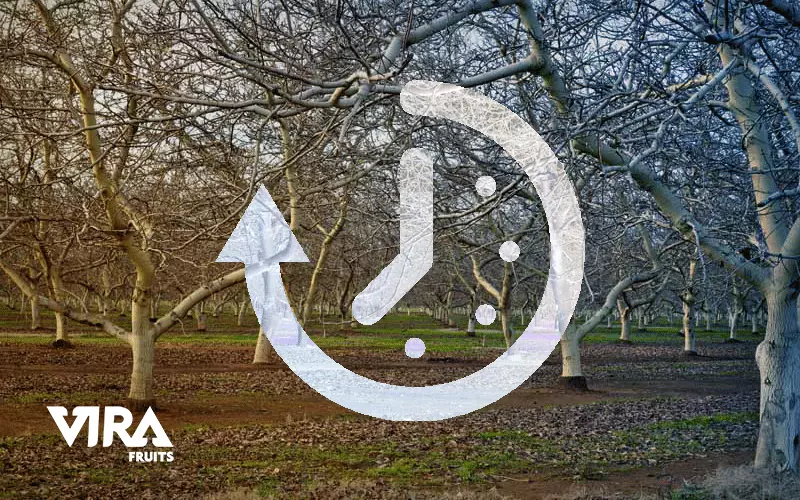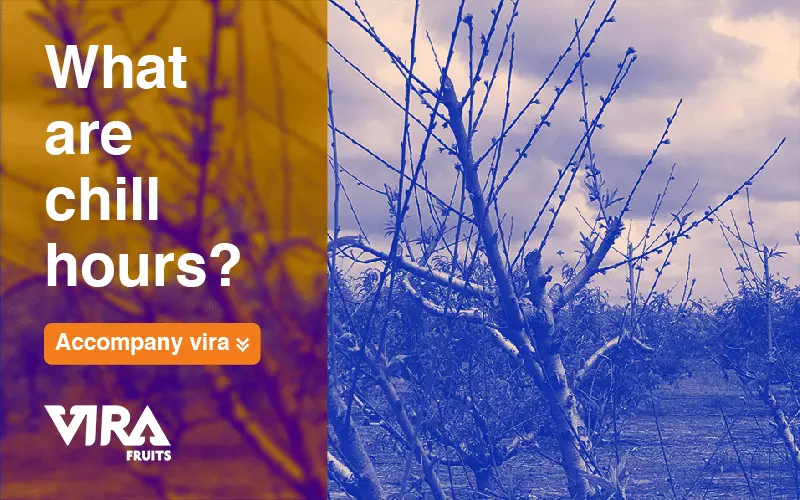To be able to bud and set fruit the following spring, fruit and nut trees need to spend some time in cold temperatures. The number of hours that the fruit spent below 45 degrees Fahrenheit is referred to as the chill hours. In order for fruit and nut trees to grow properly during the winter, they need a certain amount of chill hours. There are no required consecutive chill hours; they are cumulative for the dormant season. Here is everything that you need to know about chill hours.
By the end of fall, dormancy is underway. The longer daylight hours and the cooler temperatures trigger it. As soon as conditions are favorable for tender new growth, tree hormones suppress buds for the next season’s foliage and flowers. A tree needs a certain amount of winter cold, called the “chilling requirement,” before coming out of dormancy, blooming, and setting fruit.
Varieties differ greatly in their chilling requirements. For example, fruit and nut trees are in need of higher chill hours (800-1000); therefore, cooler northern climates are more suited for them. This is while warmer climates are better suited for those trees which require lower chill hours (500- or less).
Low chilling hours
According to Dave Wilson Nursery, “low chill” varieties are those that need 500 chilling hours or less to grow in warm-winter climates. For example, growers in warm winter climates sometimes discover that varieties require less chilling than advertised. These results may reflect the availability of chilling below 45°F in their locations, but plenty in the 45-55°F range (perhaps many foggy days), or the fact that the variety’s chilling requirements are actually lower than stated.
High chilling hours
In colder climates, the chilling requirements usually range from 800-1,000 hours or more. Most fruit tree chilling requirements are met early in the winter in the coldest climates, however. This climate calls for varieties that bloom later and are frost tolerant.
Which fruits require low chill hours?
Apples, apricots, peaches, cherries, plums, and nectarines are some of the fruits that are included as low chill hours fruit trees. You can plant them if you are not sure about chill hours of where you live.

What are the benefits of the chilling hours?
During late summer, some fruit trees and plants produce buds for the next harvest. Plants and trees begin to dormancy in cool climates as temperatures drop in fall. It is during this stage that a tree or plant becomes dormant (hibernates) in order to protect itself. All parts of the plant, including the fruit buds that will produce fruit the following year, are protected by this action.
In the spring, when temperatures rise and soil and air temperatures warm, the plants and trees come out of dormancy. As a result, Plants begin to awaken and open their fruit buds when they receive their required chill hours.
How can you count chill hours?
The best way to do this is to get someone else to do it for you. It’s a good thing that there are institutions that track these kinds of information already. All you have to do is find one and start working with them.

Points you have to realize about chilling hours
- In order to calculate fruit tree chilling temperatures, Dave Wilson Nursery uses the Hours Below 45°F model, one of the most widely used methods. During the dormant period of the year (autumn leaf fall to spring bud break), one hour of cooling equals one chill hour.
- Studies indicate that fruit trees chill further above 45°F (to about 55°F), are most effective between 35-50°F, and don’t chill below about 30°F. Early in the dormant period, temperatures above 60°F can negate the effect of accumulated chilling. In this way, specific varieties are explained by their response to different climates, i.e., to different patterns of cold and warm temperature levels.
- Only by growing it in a particular climate or region can a variety be proven for that region and climate. Always consult local nursery and nursery school staff, agricultural universities, county extension offices, and master gardeners to decide which types of fruit to grow in your area.
- During the dormant period, fruit varieties can be productive in locations with fewer chill hours than recommended if the surrounding temperature remains cool (45-55°F).
